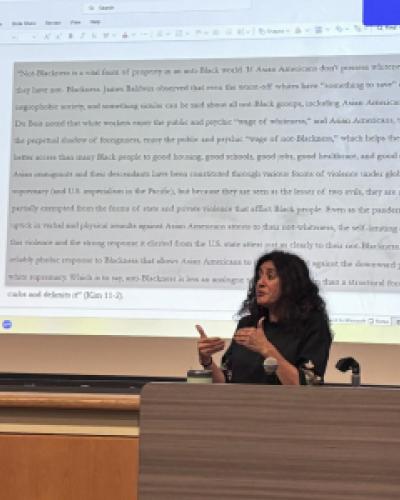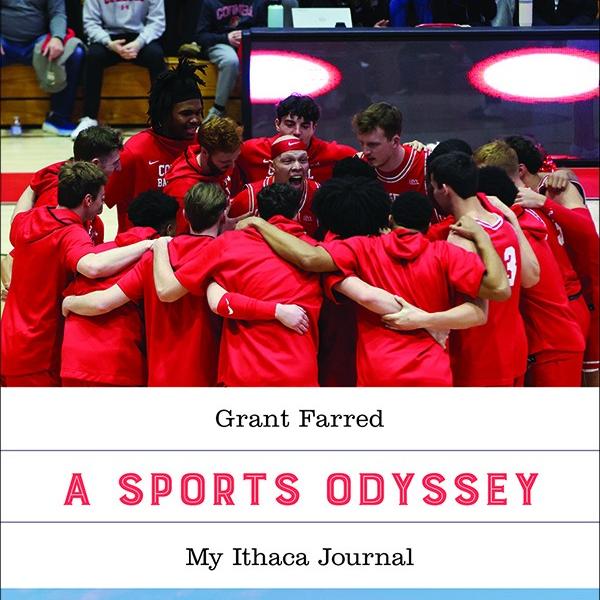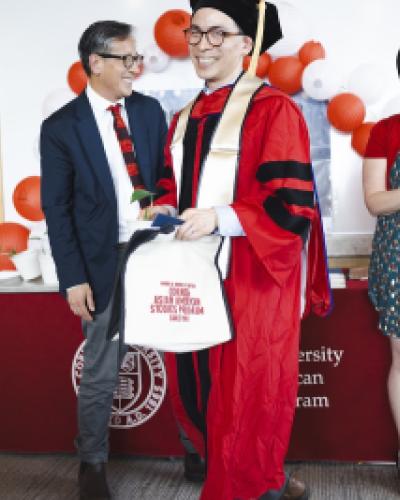This interview was conducted by Alyssa Kamath '23 and Juhwan Seo, PhD student in sociology, with Diane Wong '18, Assistant Professor of Political Science at Rutgers University, Newark. The Asian American Studies Program hosted Dr. Wong for a virtual talk, "Research Justice and Stretching the Contours of Asian American Politics," on April 13, 2021.
Alyssa: What sparked your interest in Asian American consciousness and political organizing across different demographics?
Dr. Wong: Looking back, I think what sparked my interest was taking Asian American studies courses. I can't say I knew much about Asian American Studies before college. Despite coming from Flushing, Queens, I was never truly exposed to the curriculum until college. In high school, I was taught the elementary, textbook information on Asian American history—transcontinental railroad and Japanese internment during World War II—but that was it. It wasn't until I started undergrad at SUNY Binghamton that I began to explore by taking Asian American Studies courses. I took a course called Asia Americas with Professor Lisa Yun, who is still in the English Department at Binghamton, and that was the first time I ever learned about the complexities of Asian American history and about empire, conquest, solidarities, and movement At the same time, I became involved with a magazine called Asian Outlook, it was the only Asian American student run activist magazine on campus. Founded in 1988, it was conceived in the spirit of past iterations of campus newspapers like Gidra to document Asian American news, politics, and student activism.
It was through registering for Asian American Studies courses and my work at Asian Outlook that I began to understand the contours of Asian American identity as a political commitment and as a verb—it’s something you grow into as opposed to something that is given. It was also through conversations that I had in the classroom with other student organizers at the time that I became more invested in the intellectual growth and development of Asian American Studies as a political home for youth in my generation. By the time I was a senior at Binghamton, I was working as the Director of Advocacy for the East Coast Asian American Student Union (ECAASU) and one of our primary campaigns was around the fight for Asian American Studies across college campuses. In the Fall of 2011, I co-organized an intercollegiate “Demand for Asian American Studies” conference, where we convened students from Rutgers, Williams, Syracuse, Ithaca, and Wellesley. The goal was to learn from each other's campus struggles and share tactics for developing Asian American Studies curricula and hiring full-time faculty. It was through those struggles back in the day that brought me into other arenas of organizing beyond the campus community and it continues to inspire how I think about the interconnectedness of scholarship, teaching, writing, and movement building.
Alyssa: I'm curious about how you decided to pursue a PhD within the Department of Government at Cornell. What advice might you give to individuals here, Cornell students who are interested in what you term “research justice” in the social sciences and beyond?
Dr. Wong: I often describe my work as being transdisciplinary, existing at the intersections of Asian American studies, political science, and critical urban studies. I never saw myself as a political scientist until my mentor Professor Lisa Yun situated my work with a longer lineage of scholars writing about contemporary Asian American politics. As with most social science disciplines, there are only a handful folks in political science who are also trained Asian Americanists. But there are some including Don Nakanishi who was a political scientist by training and served as the director of the Asian American Studies Center at UCLA for over two decades. I wanted to pursue a PhD within the Department of Government at Cornell because I saw myself as part of this genealogy of scholars pushing the boundaries of what was considered politics, beyond demographics and the electoral realm. Before graduate school, I made a commitment to stay grounded and to develop a practice for research justice—which is centered on developing multiple embodyminded approaches to thinking with the communities in which we choose to write. As a practice, research justice imbues an ethics of critical care to our scholarship—it challenges the extractivist logics of the academy and recognizes that communities have long been stewards of their own knowledge construction. The question then becomes: how can we think more expansively about academic and non-academic collaboration, to push boundaries and to explore new possibilities that honors the expertise of directly impacted people? As social science research becomes increasingly commodified, privatized, and inaccessible due to the gatekeeping nature of academic knowledge, research justice serves as a reminder that knowledge is not only produced within academia but that the most important knowledge is produced far beyond the confines of the university.
Juhwan: For people who want to learn about Asian America beyond just hate crimes, what are some histories, realities, or knowledge that you suggest as starting points for people to explore more?
Dr. Wong: That's a wonderful question because there are so many different entry points into learning about Asian America. The current news cycle tends to mention Asian Americans only in the context of hate crimes, as if we can’t be subjects of our own stories. There is an urgent need for a more capacious framework for how we talk about anti-Asian violence and hate crimes, one that moves us beyond individual instances of violence to a systemic understanding of root causes and interconnections. It is critical to look at the complex issues impacting Asian American communities––immigration, policing, detention, criminalization, eviction–– and to understand how those most impacted are politically responding. It’s also important to historically contextualize our current moment, I think that looking towards organizational archives could be a wonderful starting point for those interested in learning more about the realities of Asian American history and resistance.
Juhwan: I often hear representation––for example, in media or leadership––as a key concern among many different marginalized communities. Yet I see your work engaged in related but broader issues. What are the limits, disconnections, and possibilities when we take representation as a point of departure?
Dr. Wong: Representation is not enough, it never was. I mean, we see Asian American politicians who are advocating for pro-policing policies that place our communities further at risk and we see Asian American producers who are telling stories that reproduce harmful tropes. At the end of the day representation will not stop racial violence and representation alone won’t set us free. We need to think beyond representation and work in solidarity with other communities to address issues that are most pressing and urgent that our electeds won’t talk about and that you won’t see on the movie screen.
Alyssa: I'm curious about how you became compelled to study issues of gentrification, within Manhattan's Chinatown and also Asian American communities.
Dr. Wong: My academic interest with displacement stems from my own family experiences. My family grew up in the heart of Shanghai and in the mid-1980s the government started to pursue large-scale redevelopment and urban renewal projects. My grandma, mom, and aunt were displaced from their home to the outskirts of the city. That instance of displacement continued to affect their lives in different ways even after arrival in the states. Fastforward, I became involved with CAAAV: Organizing Asian communities (CAAAV), a low-to-no income grassroots group based in Manhattan Chinatown founded in the wake of anti-Asian violence in the 1980s, including the murder of Vincent Chin in 1982. CAAAV has a long history of combating anti-Asian violence in all its forms from evictions to police brutality to labor rights for sex workers, undocumented workers, domestic workers, street vendors, and garment workers. I became quite involved with their Chinatown Tenants Union, and we organized around evictions and landlord harassment in Manhattan Chinatown. I went door to door on a weekly basis with CTU staff and volunteers to see if tenants had heat, water, basic repairs, and it was so common that tenants were on the brink of being evicted from their homes. At the same time, I saw the scope of resistance tactics that organizers, activists, tenants, cultural workers were using on the ground to combat displacement and became invested in the question of emplacement. What does it mean to stay? It’s ironic that so much has been written about gentrification, yet we know so little about how those most affected are impacted. Most work focuses on the crisis without imagining the alternatives. My research asks, what does it mean for those most impacted to build a radically different future? How can Asian American women, elders, immigrants, and queer youth fight to stay in place and keep each other safe?
Juhwan: I was wondering if you could tell us a little bit more about how you envision the role of artwork and museum exhibitions in conducting social science research and community engagement.
Dr. Wong: Yeah, so actually my work with CAAAV led me to the Chinatown Art Brigade, which is an intergenerational cultural collective of media makers, artists, educators, driven by the fundamental belief that cultural, aesthetic, and material modes of production can advance social change. Over the years, I worked on many community engaged projects with brigade members that involve using augmented reality, participatory mapping, and oral history interviews. It wasn't until my involvement with the Chinatown Art Brigade that I saw myself as an artist and educator at the same time, and I have so much gratitude for the brigade because that realization has allowed me to reimagine what my relationship with academia could be. The brigade does a lot of deep relationship building and partnership with tenants, consistently centering the voices, needs, visions, and leadership of those most impacted by displacement. My work with the brigade has me thinking often about research accountability, something that we rarely talked about in academic circles but is so critical. This question of accountability and harm redress is something that academics should absolutely talk more about to ensure that our work does not replicate and reproduce existing harms and power structures that we're trying to dismantle.
Alyssa: I was wondering if you could talk more about the pandemic and your involvement in the COVID-19 Public Memory Project. How do you understand the importance of memory work and archiving the lived experience during the global pandemic?
Dr. Wong: The Asian/Pacific/American Voices: A COVID-19 Public Memory Project was started in collaboration with Lena Sze, Tomie Arai, Vivian Truong, and the Asian/Pacific/American Institute at NYU. Lately, I have been thinking a lot about how documentation is so essential to our moment. Documentation as a form of truth telling to record the grievances that our communities have been exposed to since the start of the pandemic. But also, documentation as a form of healing in the spirit of collective care. After lockdown was implemented in March of last year in New York City, a group of academics, activists, artists, and archivists including myself came together to discuss the possibilities of a memory project that could document the multifaceted experiences of Asian Americans as subjects of our own stories. As of now, the digital repository includes over fifty zoom oral history interviews and digital artifacts donated by essential workers, artists, organizers, and activists from across the country. The artifacts include zines on community care, resources for mutual aid, photographs that document neighborhood changes, and multimedia materials around anti-Asian violence and protest in response. As a social science researcher, we are always taught to extract from archives and never taught to create, preserve, or build our own. This work has been rewarding because it has forced me to pause, recalibrate, and unlearn so much in the process.
In the last several months, through these digital artifacts and zoom oral history interviews, we have learned a lot about how the pandemic has disproportionately impacted and exacerbated already existing vulnerabilities for various Asian American communities—health care workers, essential workers, factory workers, migrant farm workers, sex workers, queer and trans youth, and Native Hawaiian and Pacific Islander communities. We have tried to make this knowledge public and held two online programs since, including one last December called “On Community Care” which included a panel discussion featuring narrators and artifacts donors. As academics gather more knowledge and conduct more studies to understand inequities related to our global health crisis, the process of making this work public and accessible is so critical because only then we can begin to think about solutions and possibilities for imagining otherwise. I truly see this documentation work as essential not just for our communities’ own processing, healing, and storytelling, but for us to collectively grieve in a time when so many lives are considered to be ungrievable.
Juhwan: What did you learn from your experience of leading the Society for Asian American Graduate Affairs (SAAGA)?
Dr. Wong: I was president at for two years during my time at Cornell, but before I entered SAAGA had been around for a while. I remember when I was recruited to join, it was during orientation week, and Max Chen, who was the former SAAGA President at time, was tabling with BGPSA, LGSC, and other graduate student groups. I loved the solidarities that existed between the groups, that is how I ended up joining SAAGA. I know that SAAGA has had a long history of working in collaboration with the other graduate students of color groups and we worked on a lot of public programs together from screenings of the Grace Lee Boggs documentary to hosting the best dance parties in all of Ithaca (shout out to Justice League DJs). Sara Hernandez, who is Dean of Office of Inclusion and Student Engagement, made sure that we were well supported and that we had the funds to organize whatever imagination of events that we wanted to hold on campus. I am so glad to see SAAGA continue to thrive in different leadership. SAAGA like the Asian American Studies Program on the fourth floor of Rockefeller Hall were my homes on campus, and I am so grateful for the sustained friendships I made that have lasted far beyond my time at Cornell.
Alyssa: What is on your personal bookshelf that you'd recommend to students?
Dr. Wong: Too many to name! Well, there is the Genforward Reading Room that I am co-facilitating right now. Genforward is the first of its kind to survey millennials every two months around a variety of different issues––policing, racism, education, childcare, labor, and everything in between. As co-facilitator of the reading room, the goal is to really make this data accessible for junior scholars, activists, and organizers and to also to deepen our engagement with the logics that organize our daily day to day lives. The reading room is not only a space to engage with texts about abolition, decarcerality, intersectionality, queer theory, etc. it is also a space to foster community and inclusion for young scholars who might otherwise be excluded from the production of knowledge in their organizations or institutions. Together we have read Radical Dharma: Talking Race, Love, and Liberation by Jasmine Syedullah, Lama Rod Owens and Angel Kyodo Williams, All About Love by bell hooks, Care Work: Dreaming Disability Justice by Leah Lakshmi Piepzna-Samarasinha, We Do This 'Til We Free Us: Abolitionist Organizing and Transforming Justice by Mariame Kaba, and Emergent Strategy by Adrienne Maree Brown.






